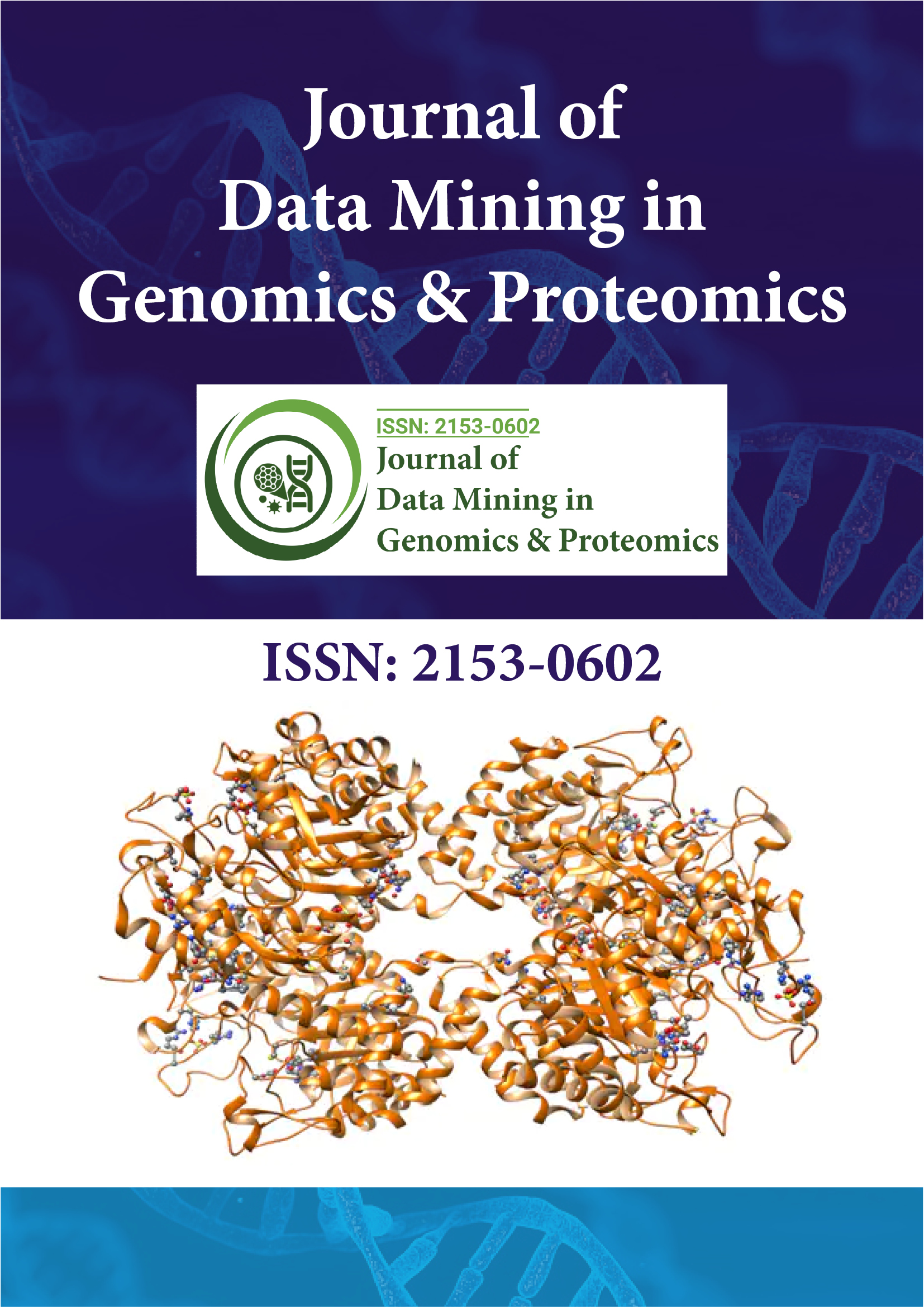PMC/PubMed Indexed Articles
Indexed In
- Academic Journals Database
- Open J Gate
- Genamics JournalSeek
- JournalTOCs
- ResearchBible
- Ulrich's Periodicals Directory
- Electronic Journals Library
- RefSeek
- Hamdard University
- EBSCO A-Z
- OCLC- WorldCat
- Scholarsteer
- SWB online catalog
- Virtual Library of Biology (vifabio)
- Publons
- MIAR
- Geneva Foundation for Medical Education and Research
- Euro Pub
- Google Scholar
Useful Links
Share This Page
Journal Flyer

Open Access Journals
- Agri and Aquaculture
- Biochemistry
- Bioinformatics & Systems Biology
- Business & Management
- Chemistry
- Clinical Sciences
- Engineering
- Food & Nutrition
- General Science
- Genetics & Molecular Biology
- Immunology & Microbiology
- Medical Sciences
- Neuroscience & Psychology
- Nursing & Health Care
- Pharmaceutical Sciences
Perspective - (2022) Volume 13, Issue 6
Protein-Protein Interactions Enhanced by 3D Genome Technology
Mofan He*Received: 04-Nov-2022, Manuscript No. JDMGP-22-18813; Editor assigned: 07-Nov-2022, Pre QC No. JDMGP-22-18813 (PQ); Reviewed: 21-Nov-2022, QC No. JDMGP-22-18813; Revised: 28-Nov-2022, Manuscript No. JDMGP-22-18813 (R); Published: 05-Dec-2022, DOI: 10.4172/2153-0602.22.13.270
Description
The biological system depends heavily on Protein-Protein Interactions (PPIs); hence it is crucial to understand the protein interactome. However, a significant amount of the protein interactome remains a mystery. Numerous computer techniques have been suggested to predict PPIs, but none of them take the 3D genome's viewpoint into account when interfacing proteins' DNA origins. It was shown that the interacting protein pairs' matching gene pairs are more likely to be close together in chromatin's 3D conformation when the interacting protein pairs were introduced into the respective 3D genomic loci. Existing PPI prediction algorithms can greatly boost their accuracy and AUC by adding 3D genome information and using diverse protein sequence encoding strategies.
It is crucial to understand the specifics of these protein-protein interactions since proteins carry out biological tasks primarily through coordinating with one another, including DNA transcription and replication, signalling cascades, metabolic cycles, and many other cellular processes. Over 100,000 binary interactions between proteins exist in a human cell at any given moment, yet only a small portion of this ensemble of proteinprotein interactions, or interactome, has been experimentally discovered. This is due to the rapidly growing amount of sequencing data being produced. From a biological perspective, the difficulty arises from the dynamic nature of these interactions, the fact that many of them are fleeting, and the fact that others happen only in specific cellular environments or at specific developmental stages. The difficulty, in terms of technology, arises from the poor throughput and inherent flaws of empirical PPI identification tests. For instance, the widely used Yeast Two-Hybrid (Y2H) system and Co-Immunoprecipitation (coIP) combined with mass spectrometry are both susceptible to making false discoveries because different steps, such as the selection of the reagent, the cell type used, and the experimental conditions, can all affect the result.
In chromatin 3D space, intra-chromosomal (per each individual chromosome), and inter-chromosomal (whole genome) analysis, the genes that correspond to the interacting proteins are closerto one another. For the intra-chromosomal studies, researchers contrasted the overall background and gene-level background contact frequencies of DNA loci within the same linear distance with the corresponding PPIs' gene-gene spatial contact frequencies (inverse to 3D distance) on Hi-C heatmaps.
To prevent linear-space batch error scenarios like replication or transcription, two highly related genes that were originally linearly next to one other in an evolutionarily less complicated genome tend to be linearly split far apart or even re-located at different chromosomes. However, in order to continue working together, they must remain close enough in proximity for their co-expression to result in the co-localization of their RNA and protein equivalents, which in turn causes protein-protein interaction. The signal peptide is one of the additional bits of data that might further enhance this hypothetical narrative image since many proteins' re-localization is aided by signal peptides. We first labelled all PPIs with at least one protein whose re-localization is aided by signal peptide, and then we divided PPIs into two categories: Signal Peptide Assisted PPI (SigPep PPI) and no signal peptide assisted PPI to study how signal peptide affects the relationship between 3D genome and PPI (Non-SigPep PPI). The frequency of gene-gene contacts for PPIs that are not helped by signal peptides is often greater than the frequency of gene-gene contacts for PPIs that are helped by signal pep3s computational techniques have been suggested to predict protein-protein interactions, but none of them take into account the interacting proteins' original DNA loci from the perspective of the 3D genome. Here, we look back at the DNA origins of the interacting proteins in the context of the 3D genome and find that 1) a gene pair's matching proteins are more likely to interact if they are located closer together in the 3D genome. 2) The corresponding gene-gene proximity in 3D genome space is influenced by the signal peptide involvement of PPI. 3) The accuracy of the current PPI prediction methods can be increased by incorporating 3D genome information. Combining our previous findings, the existence of 3D genome-driven cellular compartmentalization indicates that the co- localization of DNA elements increases the likelihood that RNA elements and protein elements will also co-localize.
Citation: He M (2022) Protein-Protein Interactions Enhanced by 3D Genome Technology. J Data Mining Genomics Proteomics. 13:270.
Copyright: © 2022 He M. This is an open access article distributed under the terms of the Creative Commons Attribution License, which permits unrestricted use, distribution, and reproduction in any medium, provided the original author and source are credited.

